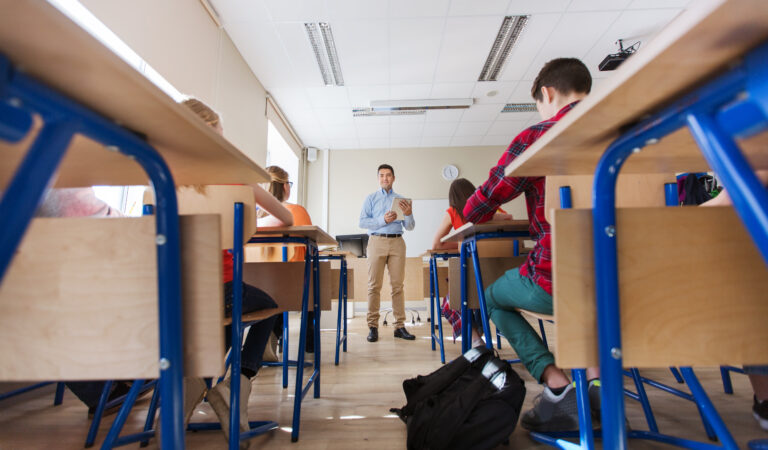This post on classroom climate is the first in a series of nine topics requested by puberty educators.
One of the primary goals of every classroom teacher is to establish a classroom climate that allows every student to learn and thrive. These are some of the factors that positive school classes strive for:
- Safety: Parents entrust their beloved children to the school for several hours each school day. Keeping students safe is a reasonable expectation. Safety includes physical freedom from harm and access to care if an injury does occur. Safety also includes emotional support and freedom from things that can result in harmful stress and trauma such as bullying, sexual harassment, inequitable learning conditions, and more. Providing a safe environment for learning also involves creating conditions that support trying new things, failing, and trying again.
- Productivity: Educators establish a sense of order and predictability that supports learning. Educators do this by ensuring that students receive instruction that is tailored to their needs, learning styles, developmental stages, and physical and cognitive abilities. Students also need access to the resources for learning and exposure to enrichment. A class with routines and procedures and freedom from disruptions allows students to focus on their learning.
- Inclusivity: Schools are charged with providing an education for all students in their care…that means ALL students. Paying attention to students of all races and ethnicities, religions, genders, orientations, socioeconomic statuses, and abilities is the only way to truly be inclusive. Providing professional development that helps educators identify and overcome implicit biases is important to becoming more inclusive. When schools establish policies and procedures that ensure safety and belonging for the students who are typically marginalized, all students benefit.
Setting Expectations
Every educator begins the school year by setting expectations for the students in their classes. One aspect of identifying expectations is establishing class rules, group agreements, or group norms for conduct in the classroom. These class rules make it safer and more productive for the educator and students to learn together.
Group Guidelines
Prior to teaching puberty education lessons, it is useful to review the class rules and add some specific group guidelines for teaching this sensitive topic. These set the expectations for student behavior and provide a safety net for the students as well as the educator. The following group guidelines are recommended for use in Puberty: The Wonder Years:
- Treat the subject seriously.
- Use humor appropriately.
- Use the dictionary terms for body parts and functions.
- Respect other people and their ideas.
- Avoid personal questions and stories.
- Ask questions; questions are good.
- Avoid gossiping.
- Talk to trusted adults.
When teaching puberty education, these group guidelines set the tone for a respectful climate that encourages curiosity and understanding. They foster discussion in the classroom and at home, creating a positive experience for all. Posting the group guidelines is a visual reminder of expectations for behavior during puberty classes.
During grades 4, 5, and 6, students are beginning to experience many physical, emotional, social, and cognitive changes of puberty. These changes affect their learning in multiple ways, making it especially important to establish a safe, productive, and inclusive classroom. When teaching puberty education, the classroom environment can either support students learning about themselves and others in a respectful environment or result in a negative experience for all.
Video Discussion
Watch this video for additional information on Preparing the Classroom Environment for Puberty Education, including how to use group guidelines.
Resources:
- Request your free lesson from the Puberty: The Wonder Years curriculum to see how the group guidelines are established in the first lesson of each grade.
- Maslow’s Hierarchy of Needs, Simply Psychology
- Bloom’s Taxonomy
- Bloom’s Taxonomy, Vanderbilt University Center for Teaching
- Professional Learning Standards for Sex Education Assessment Tool, Future of Sex Education
- All About Puberty, Nemours KidsHealth
- Ages and Stages of Healthy Childhood Sexual Development, Puberty: The Wonder Years
- Puberty, Cleveland Clinic
- Cognitive Development, Cincinnati Children’s
- Social and Emotional Changes in Pre-Teens and Teenagers, Raising Children
- Why We Need to Teach Puberty Education in 4-6, MiddleWeb
- Online Training Course for Educators, Puberty: The Wonder Years
- Icebreakers, Mind Tools
- Using Inclusive Language, Puberty: The Wonder Years
- Ground Rules/Group Agreements, Teaching Sexual Health
- Group Agreements, Harvard University



